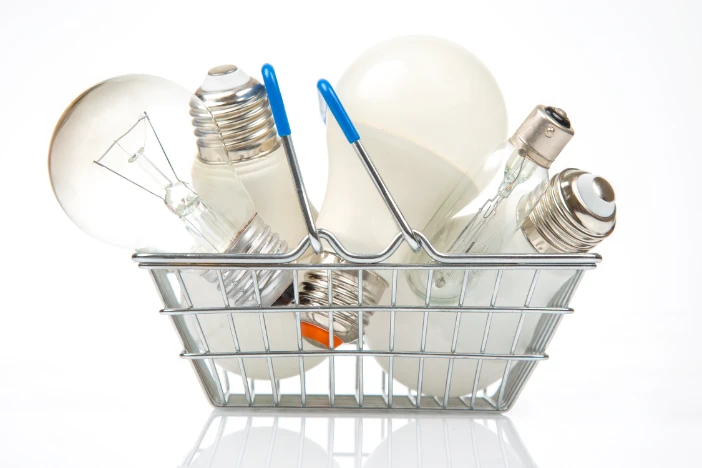
Finding the right light bulb matters
“In the beginning there was nothing. God said, ‘Let there be light!’ And there was light. There was still nothing, but you could see it a whole lot better.”
Ellen DeGeneres may have been joking when she said this, yet truer words were never spoken. Light helps us to perceive the world around us, but it is so much more. It can enhance beauty, focus our attention and dazzle us. Every good photographer knows that the “golden hour” after sunrise or before sunset has a magical quality unmatched during the rest of the day. A lighthouse is a beacon to ships seeking a safe haven in the gloom of a dark and stormy night. Simple, white light can pass through a crystal to create a wondrous kaleidoscope of color. Yes, light is amazing.
It’s not just about aesthetics, however. Light affects our ability to perform tasks and impacts our mood and circadian rhythms, which is why understanding lighting is so important [Chang, Aeschbach, Duffy, & Czeisler 2015]. But, which light bulb is the right one for each circumstance? It can be confusing with all the different lamps and light bulbs. Electrical constraints, environmental considerations and various functional requirements compound the issue.
We created this light bulb buying guide to introduce you to the many types and shapes of bulbs available today and to help you understand the relevant metrics and terminology. We have laid out the requirements for different rooms, tasks and lights. This should help you to make an informed decision when comparing and selecting the right light bulb for your needs.
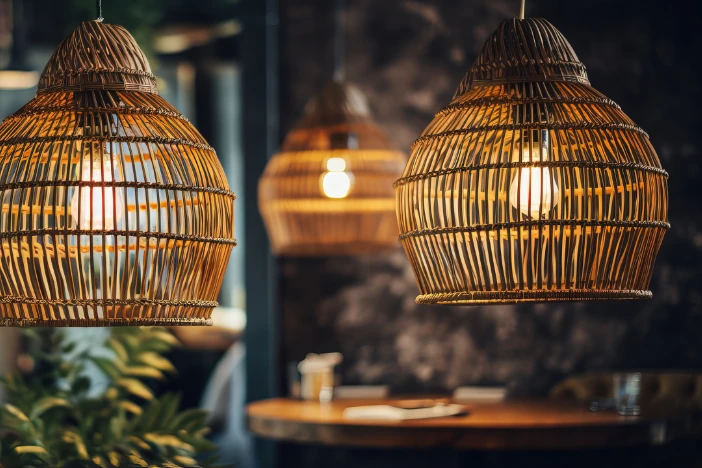
What bulb types are out there?
Thomas Edison created the first light bulb in 1879. Since then, many versions have been produced. However, the signing of the Energy Independence and Security Act (EISA) in 2007 legislated stricter standards for lighting in the U.S. It also ushered in a movement toward more eco-friendly, longer-lasting and cost-efficient light bulbs. Inefficient and outdated bulbs that cannot meet the new requirements have been or will be phased out.
LED Light Bulb
Light Emitting Diode (LED) bulbs are all the rage today because they create a lot of light, but use very little energy and last a long time. Unlike incandescent and fluorescent light bulbs, LEDs pass electricity between semiconductors versus through a filament. Consequently, less heat is generated and more energy goes into creating the light. LEDs allocate 95% of the energy toward light production and only 5% is lost as heat.
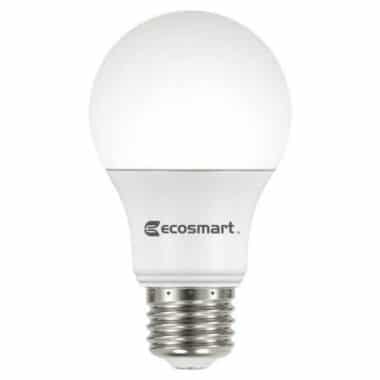
They are also more environmentally friendly than most other bulbs (largely due to this electrical efficiency) and have a lower global warming potential and cumulative energy demand than even CFLs [Principi & Fioretti 2014]. LEDs have a long lifespan (estimated 25,000 hours) because there is less heat and no filament to burn out.
LEDs are more cost-effective than alternative light bulbs despite a higher price ($3-$20 for many standard bulbs). You don’t have to replace them frequently, so your costs are often less in the long run. Look for the Energy Star certification symbol to ensure that you are purchasing LEDs that have met the rigorous efficiency standards set by EISA. As costs have continued to decline, LED bulbs have become ubiquitous not only indoors but for outdoor dining and lounge settings.
Incandescent Lightbulb
The incandescent light bulb is the classic design Edison invented. It’s made of a tungsten filament that glows with light when it’s heated by an electric current within a glass enclosure. Unlike LEDs, an incandescent light bulb expends 95% of the energy it takes in to generate heat and only 5% is converted into light. This makes them very inefficient and increases your electricity bill.
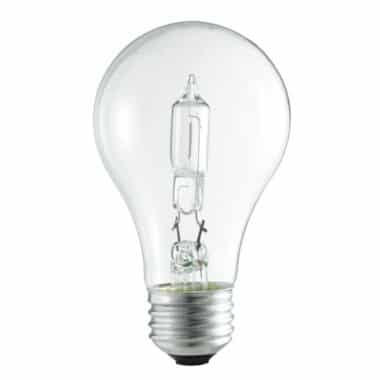
Incandescent light bulbs, however, are relatively inexpensive ($0.50-$5 for most standard bulbs). The downside is that the filament typically burns out within a thousand hours. In the long run, their replacement costs exceed those of LEDs. Many traditional incandescent light bulbs are being discontinued, due to their inability to meet EISA requirements. New technological advances, however, have resulted in higher efficiency incandescent alternatives.
General service
This is the iconic bulb that most people think of when they picture a light bulb. Its low cost and warm yellow-white light, emitted in all directions, makes it a convenient easy choice for many general applications.
Halogen
These are simply incandescent bulbs that contain halogen gas. As the tungsten burns, the resulting gas is “recycled” back onto the filament with the help of the halogen gas. It produces a brighter and whiter light and is slightly more efficient than traditional incandescent bulbs. It has an expected lifetime twice that of general incandescent bulbs (roughly 2,000 hours). One drawback of halogen lights is that they tend to “run hot.” They are also a little more expensive than regular incandescent bulbs ($2-$7 for many standard bulbs).
Xenon
Xenon light bulbs operate in the same way as halogens, but last 10,000 hours. The Xenon gas glows when in the presence of an electric current. This enables it to achieve the same brightness while requiring less energy. Unlike halogens, xenon bulbs generate very little heat, while emitting a slightly warmer color light.
Reflectorized
Some incandescent bulbs have a reflective coating that focuses their light in one direction. Reflectorized light bulbs put out twice the light of general ones. Parabolic versions control the light with even more precision and emit up to four times the light.
Fluorescent Light Bulb
Fluorescent light bulbs create light via a three-step process:
- Electricity ionizes (i.e. removes electrons from) mercury vapor in the bulb
- The released electrons radiate photons at UV wavelengths (i.e. invisible electromagnetic energy)
- This energy is converted into visible light by a phosphor coating on the inside of the bulb
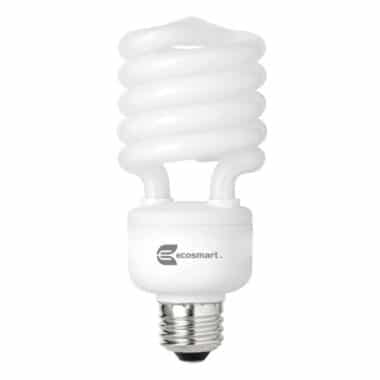
These light bulbs use only 20-33% of the electricity of incandescent versions and last ten times longer (10,000 hours). They contain a small amount of mercury, so burnt-out fluorescent bulbs should not simply be thrown out in the trash. Find proper recycling and disposal guidelines on the Environmental Protection Agency website: epa.gov.
CFL (Compact Fluorescent)
These new small fluorescent bulbs often have screw bases that fit most lamp sockets and can be substituted for incandescent bulbs. CFL light bulbs also have many advantages over earlier fluorescents. They immediately turn on (no start-up flicker), are quiet and the light is warmer and color-corrected. CFL bulbs are more expensive than most halogen incandescent bulbs but slightly less than LEDs ($2.50-$10 for most standard bulbs).
T8 and T12
We typically think of these tubular light bulbs when we hear “fluorescent lights.” They were used for commercial purposes almost exclusively, but technological improvements have made residential applications much more common.
HID Lightbulb (High-Intensity Discharge)
HID bulbs create light by sending an electric current between two tungsten electrodes housed in a bulb filled with gas and metallic salts. The gas helps facilitate the generation of an electrical arc, which heats the metal salts and creates a plasma. This amplifies the light produced by the arc. These bulbs are highly efficient and have long lives, but emit a rather unpleasant light, though it has an almost sun-like luminescence.
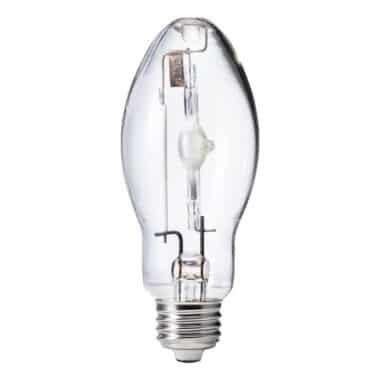
Consequently, they are usually employed in outdoor settings, for security or automotive headlights [Baumann, Schwieger, Wolff, Manders & Suijker 2015].
HIDs can use the following gases/vapors:
- Metal Halide
- High-Pressure Sodium
- Low-Pressure Sodium
- Mercury Vapor
Type is only one characteristic
The kind of light bulb is an important consideration when evaluating options. However, other worthy traits impact what is best for your situation. The next section of our guides goes over various light bulb shapes.
Guide Sections
Other lighting resources
- American National Standards Institute (ANSI) – Establishes a voluntary standardization system for the U.S. private sector
- Department of Energy (DOE) – Addresses U.S. energy and environmental challenges via scientific and technological solutions
- Consumer Reports – Empowers consumers with product knowledge they can trust to make better purchase decisions
References
- Baumann, B., Schwieger, J., Wolff, M., Manders, F., & Suijker, J. (2015). Numerical investigation of symmetry breaking and critical behavior of the acoustic streaming field in high-intensity discharge lamps. Journal of Physics D: Applied Physics, 48(25), 255501.
- Chang, A. M., Aeschbach, D., Duffy, J. F., & Czeisler, C. A. (2015). Evening use of light-emitting eReaders negatively affects sleep, circadian timing, and next-morning alertness. Proceedings of the National Academy of Sciences, 112(4), 1232-1237.
- Principi, P., & Fioretti, R. (2014). A comparative life cycle assessment of luminaires for general lighting for the office–compact fluorescent (CFL) vs Light Emitting Diode (LED)–a case study. Journal of Cleaner Production, 83, 96-107.
Frequently Asked Questions – Light Bulbs
How do you dispose of fluorescent and CFL bulbs?
These types of light bulbs contain mercury, which is a toxic substance, so many places have laws that prohibit disposing of them in the trash. Check with your local recycling center or garbage service to see if it’s okay to throw CFLs and other fluorescent bulbs in the trash. The following states have made it illegal to throw them out: CA, ME, MA, MN, NH, VT and WA. If it’s legal to throw them out in your area, be sure to wrap fluorescent or CFL bulbs in a paper bag. Even if it’s legal to dispose of them in the garbage, try to recycle them if at all possible – every little bit of eco-friendly behavior helps.
How do you dispose of incandescent lightbulbs?
Incandescent bulbs don’t contain hazardous toxic materials, so it’s okay to simply throw them in the trash. Because they’re typically made of thin and fragile glass, it’s generally a good idea to wrap them in a paper grocery bag or heavy plastic bag to minimize the chance of shattering or at least prevent glass shards from scattering.
How do you dispose of halogen light bulbs?
Halogen bulbs are also toxin-free, so it’s safe to toss them in the garbage too. Most halogen light bulbs are more durable than their incandescent counterparts, so it’s not always necessary to wrap them in protective materials before throwing them away.
How do you dispose of LEDs?
These energy efficient bulbs do not contain mercury, so you can throw them in the trash. However, LED light bulbs contain many recyclable materials, so it’s a good idea to recycle them if you can. Recycling centers may handle LEDs differently than fluorescent and CFL light bulbs, so be sure to keep them separated when you make your drop off.
Where can you recycle lightbulbs?
The EPA recommends that you visit Earth 911 to identify local recycling centers that accept light bulbs and other recyclable items and materials. In addition to formal receiving centers, some large retailers like Home Depot or IKEA offer drop-off bins for light bulbs purchased through them.

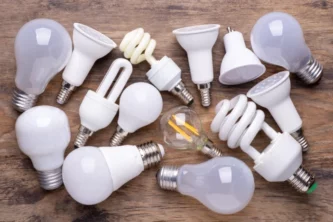
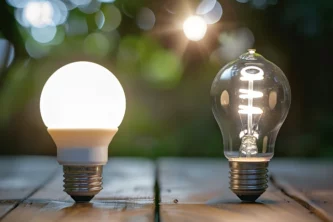
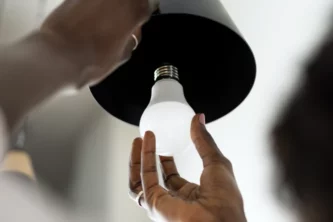




Leave a Reply